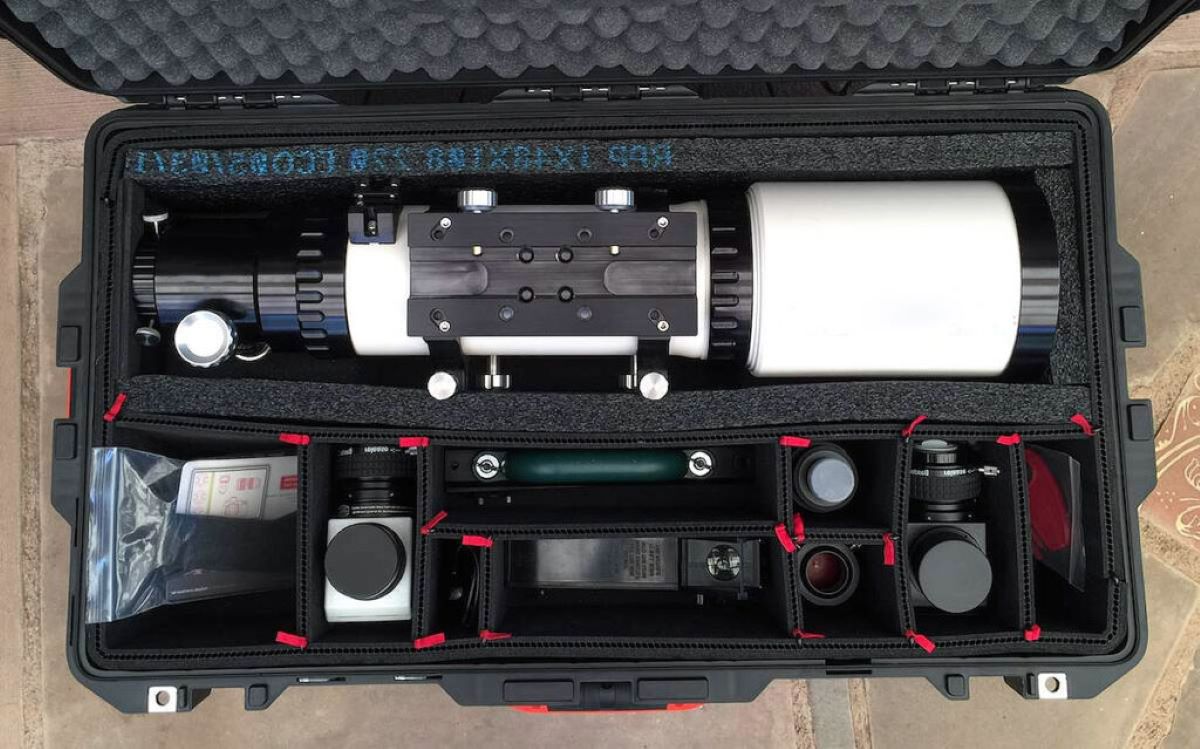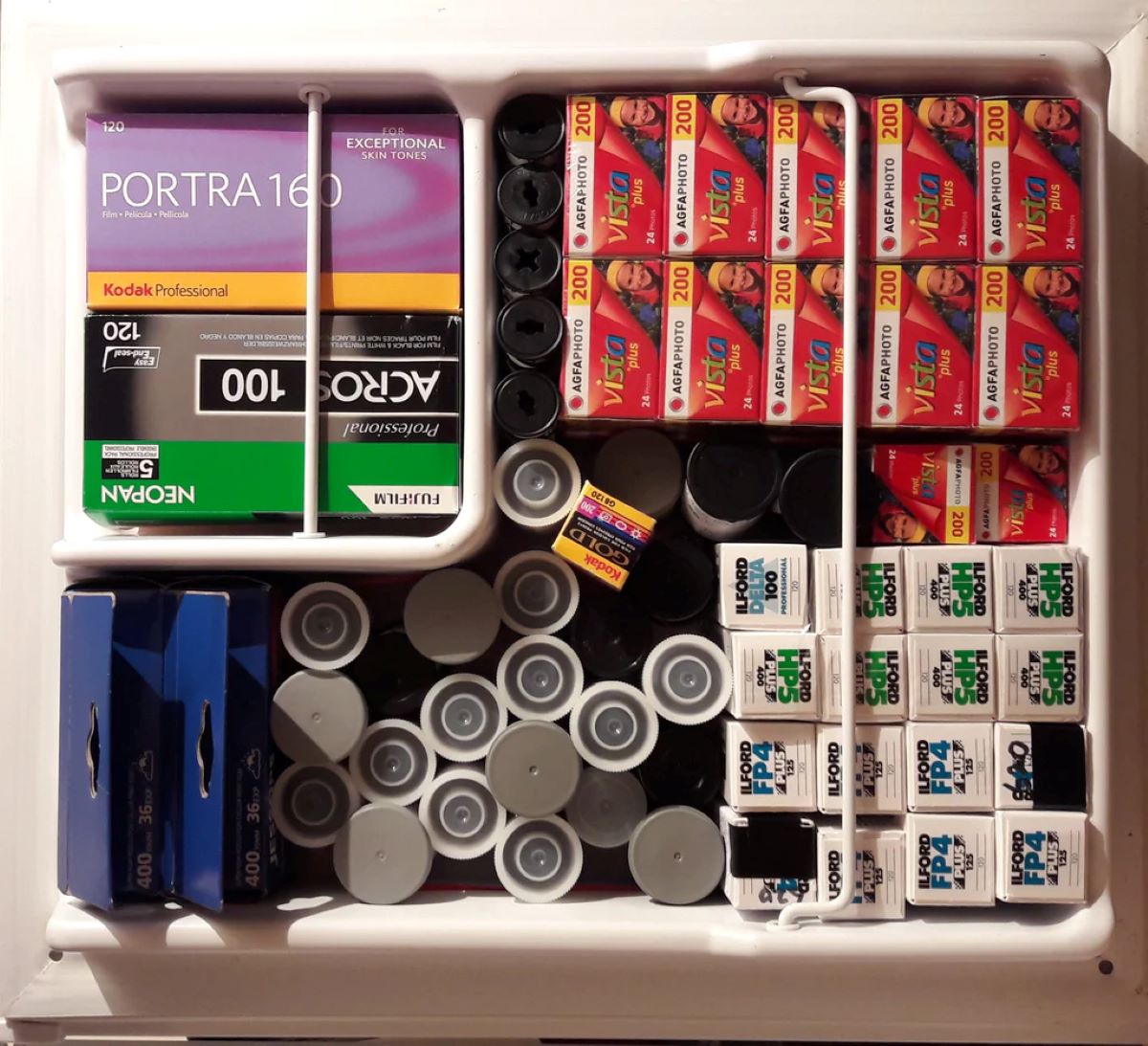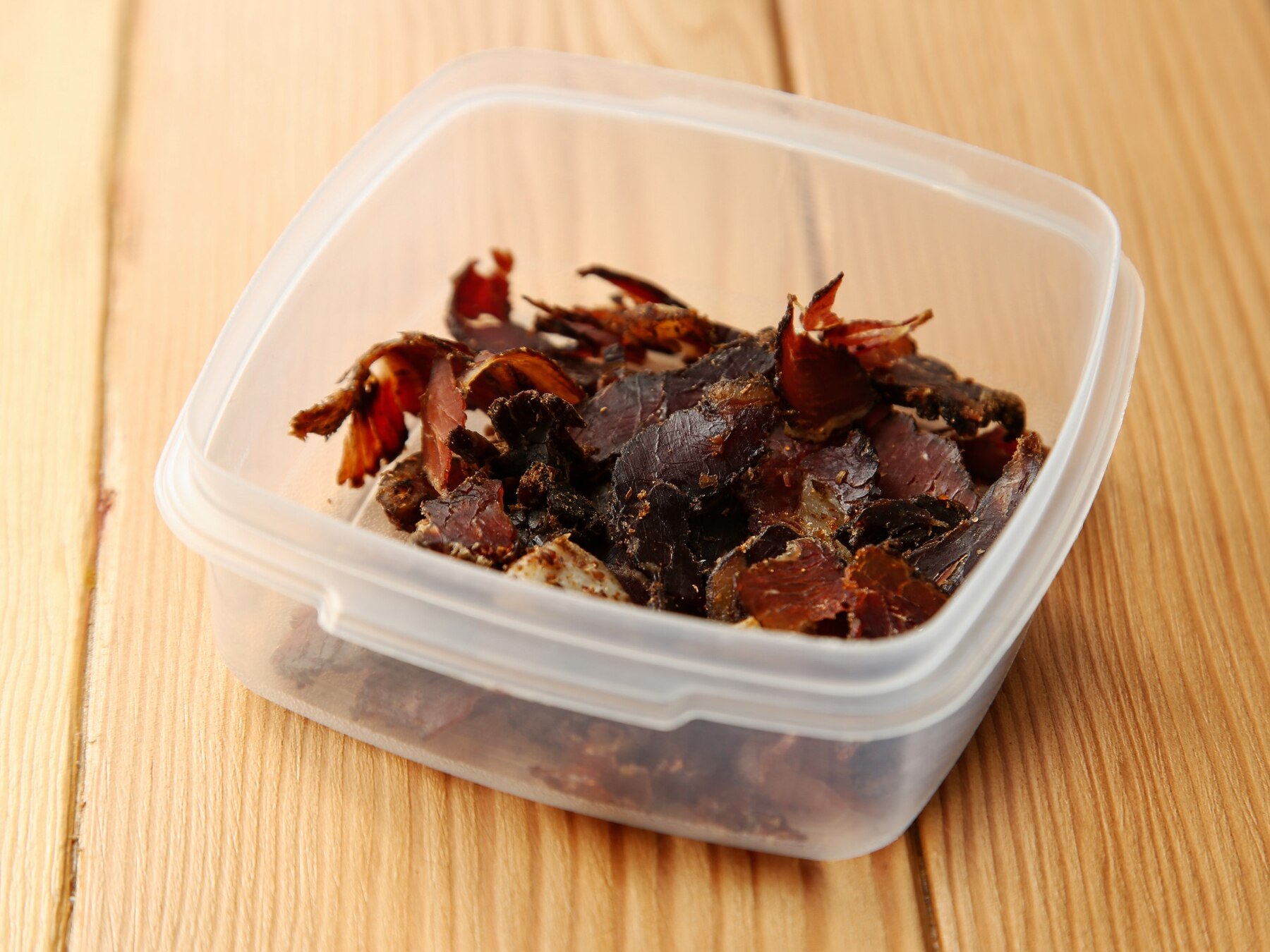

Articles
How To Store Sashimi
Modified: December 7, 2023
Learn the best techniques for storing sashimi properly and keeping it fresh in this informative article. Find tips and tricks to preserve the flavors of your favorite sashimi dishes.
(Many of the links in this article redirect to a specific reviewed product. Your purchase of these products through affiliate links helps to generate commission for Storables.com, at no extra cost. Learn more)
Introduction
Welcome to the world of sashimi, a delicacy that tantalizes the taste buds and showcases the freshness and quality of seafood. Whether you’re a sushi aficionado or a seafood enthusiast, properly storing sashimi is essential to preserving its taste, texture, and nutritional value.
In this article, we will guide you through the process of storing sashimi, ensuring that each slice retains its freshness and flavor. From selecting the freshest sashimi to choosing the appropriate storage containers and maintaining the ideal temperature, we have got you covered.
So, if you love indulging in this exquisite Japanese delicacy, read on to discover the best practices for storing your sashimi and enjoying it at its finest.
Key Takeaways:
- Choose the freshest sashimi from reputable sources, paying attention to firmness, color, and smell. Properly store sashimi in airtight, non-reactive containers at 32°F to 39°F for optimal freshness and flavor.
- Thaw frozen sashimi slowly in the refrigerator and consume it immediately for the best taste and texture. Practice proper food safety and trust your senses when determining sashimi freshness.
Read more: How To Store Store-Bought Bread
Choosing Fresh Sashimi
The key to storing sashimi successfully begins with selecting the freshest fish or seafood. When choosing sashimi, keep the following tips in mind:
- Buy from a reputable source: It’s crucial to purchase sashimi from a trusted seafood provider or a reputable fish market. Ensure that they have a reputation for selling high-quality, fresh seafood.
- Check for firmness: Fresh sashimi should feel firm to the touch. Avoid any pieces that are overly soft or mushy, as this indicates a lack of freshness.
- Inspect the color: The color of the sashimi can provide clues about its freshness. Look for vibrant and bright hues, as dull or discolored fish may be past its prime.
- Examine the smell: A fresh piece of sashimi should not have a strong or unpleasant odor. Trust your nose – if it smells fishy or off, it’s best to avoid it.
- Consider the source: Different varieties of fish and seafood have varying levels of freshness. Consult a knowledgeable fishmonger or refer to reputable resources to learn about the seasonal availability and peak freshness of different types of sashimi.
By following these guidelines, you can ensure that you start with the highest quality sashimi for storage, which will ultimately result in a more enjoyable dining experience.
Proper Storage Containers
Choosing the right storage containers is essential to maintain the freshness and quality of sashimi. Here are some factors to consider when selecting the appropriate containers:
- Airtight and leak-proof: Opt for containers that have a tight seal to prevent air and moisture from entering. This helps to preserve the texture and taste of the sashimi and prevents any potential cross-contamination.
- Non-reactive material: Use containers made of non-reactive materials such as glass or food-grade plastic. This ensures that the container won’t react with the sashimi, altering its flavor or compromising its quality.
- Transparent: Choose containers that are transparent or have clear lids. This allows you to easily see the contents without opening the container, reducing exposure to air and maintaining freshness.
- Appropriate size: Select containers that can accommodate the amount of sashimi you plan to store without overcrowding. Overfilling the container can lead to compression and damage to the delicate slices.
Investing in high-quality storage containers will not only help preserve the sashimi but also make it easier to organize and retrieve it when needed. Remember to clean the containers thoroughly before use to prevent any bacterial growth or contamination.
Storage Temperature
The temperature at which you store your sashimi is crucial to maintaining its freshness. The goal is to keep the sashimi at a temperature that inhibits bacterial growth while preserving its delicate texture and flavor. Here are some guidelines for storing sashimi at the proper temperature:
- Refrigeration: The best place to store sashimi is in the refrigerator. Set the temperature to between 32°F (0°C) and 39°F (4°C). This range is ideal for slowing down bacterial growth and maintaining the quality of the sashimi.
- Cold storage: If you have a separate area in your fridge specifically designed for colder storage, such as a dedicated seafood compartment, utilize that space for your sashimi. The colder temperature in these compartments can help preserve the quality and freshness of the fish.
- Avoid freezing: While freezing sashimi is possible, it can affect the texture and taste. If you plan to consume the sashimi within a few days, refrigeration is sufficient. Freezing is best reserved for long-term storage.
Remember to place the sashimi in the coldest part of the refrigerator, typically at the back or the bottom shelf. Avoid placing it near the front or the door where temperature fluctuations are more frequent.
Additionally, it’s important to note that sashimi is best enjoyed fresh, so try to consume it within a day or two of purchasing for the best flavor and quality. If you can’t consume it immediately, proper storage at the right temperature will help prolong its freshness.
Storage Duration
While sashimi is best enjoyed fresh, there may be times when you need to store it for a short period. Proper storage duration plays a crucial role in maintaining the quality and safety of the sashimi. Here are some guidelines for storing sashimi for optimal duration:
- Consume within 24-48 hours: For the best taste and texture, it is recommended to consume sashimi within 24-48 hours of purchase. This ensures that you enjoy the peak freshness of the fish or seafood.
- Be cautious with raw fish: Different types of fish have varying degrees of perishability. For example, delicate types like tuna or salmon might not last as long as more robust varieties like yellowtail or mackerel. Always refer to the guidelines provided by the seafood vendor or consult a trusted source to determine the optimal storage duration for your specific sashimi.
- Labeling: To keep track of the storage duration, label your containers with the date of purchase or storage. This will help you remember how long the sashimi has been in the refrigerator and make informed decisions about its consumption.
- Trust your senses: Even within the recommended storage duration, it’s important to trust your senses when determining the freshness of the sashimi. If it looks or smells off, or if the texture is no longer firm, it’s best to err on the side of caution and discard it.
Always remember that sashimi is a delicate and perishable food, and consuming it beyond the recommended storage duration can pose risks to your health. It’s best to practice good food safety habits and prioritize freshness when it comes to sashimi.
Store sashimi in the coldest part of the refrigerator, ideally between 32-38°F (0-3°C). Place it in an airtight container or wrap it tightly in plastic wrap to prevent exposure to air and odors. Use it within 24 hours for the best quality.
Read more: How To Store Basil From Grocery Store
Preparing Sashimi for Storage
Before storing sashimi, proper preparation is crucial to maintain its quality and ensure safe consumption. Follow these steps to prepare sashimi for storage:
- Inspect and clean: Thoroughly inspect the sashimi to ensure there are no visible signs of spoilage or damage. Remove any bones, scales, or skin, if necessary. Rinse the sashimi gently under cold water to remove any impurities.
- Pat dry: Using a clean paper towel, gently pat dry the sashimi to remove excess moisture. Moisture can contribute to bacterial growth and degrade the quality of the sashimi during storage, so it’s important to eliminate as much as possible.
- Slice just before storage: For the best results, slice the sashimi just before you plan to store it. This helps to maintain the texture and flavor of the fish. If the sashimi comes pre-sliced, ensure that the slices are separated to prevent them from sticking together during storage.
By following these steps, you can ensure that your sashimi is properly prepared for storage. This preparation ensures that the sashimi remains fresh, safe to eat, and retains its original taste and texture.
Wrapping and Labeling
Properly wrapping and labeling your sashimi is essential for maintaining its freshness and organization during storage. Here are some guidelines to follow:
- Use plastic wrap or airtight bags: Wrap each slice of sashimi individually with plastic wrap or place them in airtight bags. This creates a barrier against air and moisture, keeping the slices fresh and preventing cross-contamination.
- Remove excess air: When wrapping the sashimi, make sure to remove as much air as possible to minimize oxidation and maintain the quality of the fish. Press the plastic wrap or airtight bag tightly against the sashimi to remove any trapped air.
- Label each package: Label each wrapped or bagged package with the date of storage using a food-safe marker. This helps you keep track of the storage duration and ensures that you consume the sashimi within the recommended timeframe.
- Organize in the refrigerator: Arrange the wrapped or bagged sashimi slices neatly in the refrigerator. Stack them carefully, placing the newer packages behind the older ones to ensure that you use them in the appropriate order.
By following these wrapping and labeling practices, you can ensure that your sashimi remains fresh, easily identifiable, and organized during storage. This will make it more convenient for you to retrieve and enjoy your delicious sashimi when the time comes.
Best Practices for Thawing Frozen Sashimi
If you have frozen sashimi that you would like to enjoy, it’s important to thaw it properly to maintain its taste and texture. Here are some best practices for thawing frozen sashimi:
- Plan ahead: Thawing sashimi requires some planning, as it’s best to thaw it slowly in the refrigerator. Allow sufficient time for the sashimi to thaw completely before you plan to consume it.
- Transfer to the refrigerator: Start by transferring the frozen sashimi from the freezer to the refrigerator. Place it in a shallow dish or on a plate to prevent any liquids from dripping onto other foods.
- Gentle thawing: Allow the sashimi to thaw slowly in the refrigerator. This gradual thawing process helps preserve the texture and flavor of the fish. Large pieces of sashimi may take up to 24 hours to thaw completely, while smaller slices may thaw in a shorter time.
- Avoid room temperature or hot water: Avoid thawing sashimi at room temperature or using hot water, as this can promote bacterial growth and compromise the quality of the fish. These rapid thawing methods can also lead to uneven thawing, affecting the texture of the sashimi.
Once the sashimi is fully thawed, handle it carefully to prevent any damage or breakage. Enjoy it fresh, following your preferred serving method, and savor the flavors of the delectable sashimi.
Remember, it’s best to consume thawed sashimi immediately after thawing for the optimal taste and quality. Avoid refreezing previously frozen sashimi, as this can affect its texture and taste.
Conclusion
Properly storing sashimi is essential to maintain its freshness, flavor, and quality. By following the guidelines outlined in this article, you can ensure that each slice of sashimi remains delicious and safe to consume.
Start by choosing the freshest sashimi from a reputable source, paying attention to its firmness, color, and smell. Select the right storage containers that are airtight, non-reactive, and transparent to preserve the sashimi’s integrity. Store the sashimi at the proper temperature, refrigerating it between 32°F (0°C) and 39°F (4°C) to inhibit bacterial growth.
Keep in mind the recommended storage duration for sashimi, aiming to consume it within 24-48 hours of purchase for the best taste and texture. Properly prepare the sashimi by inspecting, cleaning, patting dry, and slicing it just before storage.
When wrapping and labeling the sashimi, ensure each piece is individually wrapped or placed in airtight bags, removing excess air. Label each package with the storage date for easy tracking and organization.
If you have frozen sashimi, thaw it slowly in the refrigerator to maintain its quality, avoiding room temperature or hot water thawing methods.
Remember, sashimi is a delicate delicacy that should be enjoyed as fresh as possible. Practice proper food safety measures and trust your senses when it comes to determining the freshness and quality of the sashimi.
By following these best practices for storing sashimi, you can extend its shelf life without compromising its taste and nutritional value. So, go ahead and indulge in the exquisite flavors of sashimi, knowing that you have taken the necessary steps to preserve its richness.
Frequently Asked Questions about How To Store Sashimi
Was this page helpful?
At Storables.com, we guarantee accurate and reliable information. Our content, validated by Expert Board Contributors, is crafted following stringent Editorial Policies. We're committed to providing you with well-researched, expert-backed insights for all your informational needs.















0 thoughts on “How To Store Sashimi”